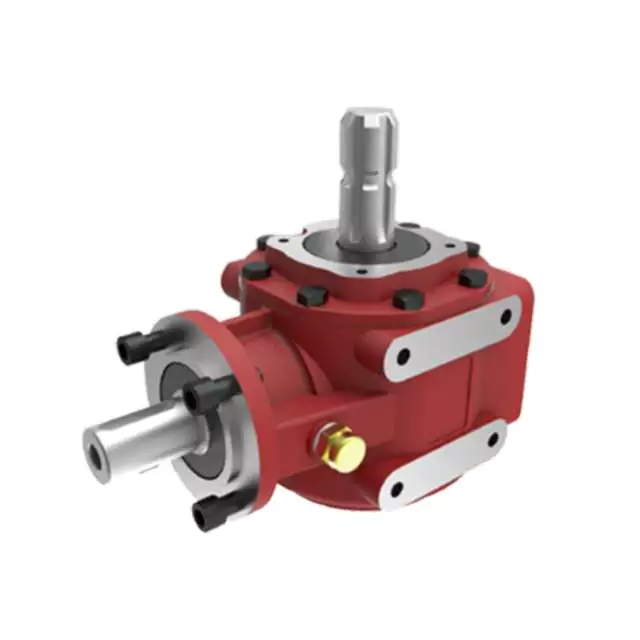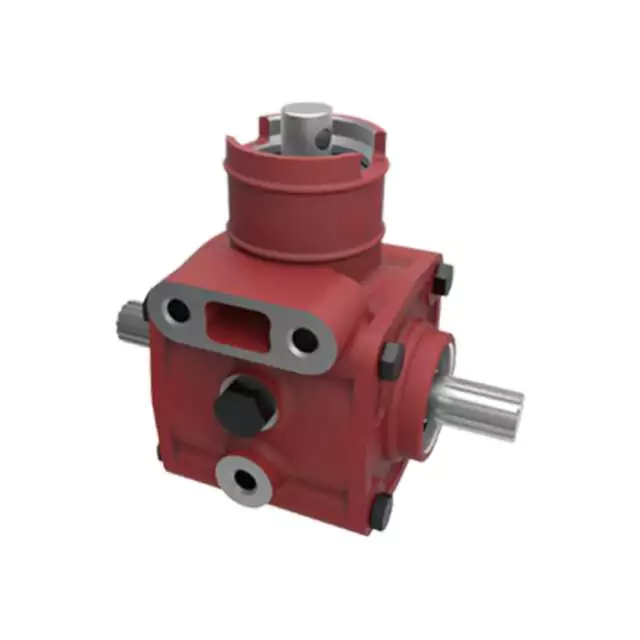Product Description
EP-AG135 Agricultural gearbox Lawn mower series
Characteristic
There are 3 basic types of lawn mowers, manual and hydrostatic. Each 1 offers a different set of advantages and
disadvantages. Let’s examine each type and its benefits. Which type is right for you? Continue reading to learn more. Also, make sure to read our review of the Hydrostatic lawn mower. This is a good choice for anyone who wants to maintain their lawn in an eco-friendly manner. It is a great way to save money on your next lawn-mowing project.
Hydrostatic transmission
A lawn mower gearbox with a hydrostatic transmission uses fluid to shift the machine’s gears. Hydros are similar to automatic transmissions found in cars, and feature a pump that effects the flow of hydraulic fluid. The lawn mower gearbox is composed of various mechanical parts, including a differential and drive axle. If any of these components fail, the lawn mower will not move.Check the hydrostatic transmission for leaks by checking the label on the shift lever.
A lawn mower with a hydrostatic transmission uses fluid instead of gas or oil to turn the wheels. Hydrostatic lawn mowers are easier to operate, and have a lever that can be operated by hand. It is important to keep this lever vertical to prevent
overturning. To start the machine moving forward, push the lever forward, and push the lever backward to shift it into reverse.This way, you can change the direction of the mower as you go.
If you’re considering upgrading your lawn mower gearbox, consider hydrostatic transmissions. These lawn mower gearboxes feature the same benefits of an automatic transmission, but they have more complicated engineering and components. They’re also more expensive to buy and repair, so make sure to follow instructions on how to maintain them. In addition to ensuring the proper functioning of your lawn mower gearbox, you should clean and maintain the transmission regularly.
Hydro-Gear transmission
Hydro-Gear makes many different types of lawn mower transmissions. These include riding mowers, zero-turn mowers, and lawn tractors. If you need to replace your lawn mower transmission, consider a Hydro-Gear transmission. You can find hydro-gear transmissions at Power Mower Sales. You will get fast shipping and competitive prices when you shop with us. Hydro-Gear lawn mowers are 1 of the best-selling brands in lawn care equipment.
You can find replacement parts for your lawn mower’s transmission at the online store of your dealer. Hydro-Gear transmissions fit many top-brand lawn mowers, and are easy to install. The Hydro-Gear ZT-2200 and ZT-2800 are both lightweight zero-turn mowers. The ZT-3100 features upgraded axles and bearings for longer commercial use. Hydro-Gear also makes large commercial models with up to 18 HangZhous of transportable range and two-speed operation.
The Honda Cruise Control allows you to control the speed of the machine by adjusting a clutch lever. You can choose from 9 preset maximum speeds and adjust the speed gradually. The Honda Hydro-Gear transmission allows you to enjoy smooth riding while mowing your lawn. It is easy to operate and does not require constant input. The automatic speed control makes mowing a breeze.When you are shopping for a lawn mower, consider the type of terrain you have and the terrain that you typically mow.
Manual transmission
When looking for a lawn mower, you will find that there are 2 main types of mowing machines: hydrostatic and automatic. Although both types of lawn mowers are popular in many households, you may also want to consider buying an electric one. These models are environmentally-friendly, and they can still produce excellent results. When shopping for a lawn mower, pay close attention to the transmission, as this will greatly affect how it mows.
In addition to speed, a lawn mower’s transmission controls torque and speed. Different transmissions provide different levels of torque, allowing the rider to change the gear ratio as necessary. Lower gears produce more traction, but you can’t go as fast.Different transmissions offer different gear ratios and gear numbers, depending on the type of mower. To learn which 1 works best for you, read the manual. Then, take the mower to a mechanic for a thorough inspection.
Another popular type of transmission is the belt drive system. This system uses 2 levers to change speed. It is a reliable type of transmission, although it isn’t recommended for steep terrain or heavy duty use. Automatic transmissions are typically more expensive, but they are easy to maintain and offer a good balance of responsiveness and ease of use. In addition to minimizing maintenance, these lawn mowers often come with optional cruise controls, making them an attractive choice.
|
PRODUCT PARAMETERS |
|
|
ITEM |
HC-AG135 |
|
Ratio |
1:1 |
|
Teeth |
20/20 |
|
Module |
6 |
|
Power(HP) |
50 |
|
Rated Input |
540 rpm |
|
Input/Output Description |
1 3/8 Z6 Cone base aequilate spline shaft |
|
Weight(N.W) |
16.5Kg |
Company Information
/* January 22, 2571 19:08:37 */!function(){function s(e,r){var a,o={};try{e&&e.split(“,”).forEach(function(e,t){e&&(a=e.match(/(.*?):(.*)$/))&&1
| Type: | Agricultural |
|---|---|
| Usage: | Agricultural Products Processing, Farmland Infrastructure, Tillage, Harvester, Planting and Fertilization, Grain Threshing, Cleaning and Drying |
| Material: | Iron |
| Power Source: | Electricity |
| Weight: | 16.5kg |
| After-sales Service: | Installation Guide 3-Year Warranty |
| Customization: |
Available
| Customized Request |
|---|

Lubrication Practices for Extending the Lifespan of Agricultural Gearboxes
Proper lubrication is essential for ensuring the longevity and optimal performance of agricultural gearboxes. Here are some essential lubrication practices that can help extend the lifespan of these gearboxes:
- Choose the Right Lubricant: Select a high-quality lubricant specifically designed for gearboxes and agricultural machinery. Consider factors such as viscosity, temperature range, and load-bearing capacity to ensure compatibility with the gearbox’s operating conditions.
- Regular Inspection: Perform regular visual inspections of the gearbox and lubricant to check for signs of contamination, wear, or inadequate lubrication. Address any issues promptly to prevent further damage.
- Cleanliness: Maintain a clean environment around the gearbox to minimize the risk of dirt, debris, and moisture entering the gearbox housing. Contaminants can compromise the lubricant’s effectiveness and accelerate wear.
- Lubricant Level: Monitor and maintain the proper lubricant level in the gearbox. Insufficient lubrication can lead to increased friction and heat, causing premature wear and potential damage to gears and bearings.
- Replace Lubricant: Follow the manufacturer’s recommendations for lubricant change intervals. Over time, lubricants can degrade, lose their properties, and become contaminated. Regularly replacing the lubricant helps ensure optimal performance.
- Use Lubrication Schedule: Create a lubrication schedule based on the gearbox’s usage and operating conditions. Stick to the recommended intervals for applying or changing lubricant to prevent under-lubrication or over-lubrication.
- Appropriate Lubrication Method: Follow the manufacturer’s guidelines for the correct lubrication method, whether it’s through oil bath, grease, or automatic lubrication systems. Proper application ensures even distribution of lubricant across gear surfaces.
- Temperature Considerations: Be aware of temperature variations in your operating environment. Extreme temperatures can affect lubricant viscosity and performance. Choose a lubricant that can handle the temperature range of your equipment.
- Expert Advice: Consult the gearbox manufacturer or a lubrication specialist to determine the best lubrication practices for your specific agricultural gearbox model and application.
By adhering to these lubrication practices, farmers can maximize the lifespan of their agricultural gearboxes, minimize downtime, and ensure efficient and reliable operation of their equipment.

Enhancing Efficiency and Productivity in Farming Operations with Agricultural Gearboxes
Agricultural gearboxes play a pivotal role in enhancing efficiency and productivity across various farming operations. Here’s how agricultural gearboxes contribute to improving farming practices:
- Power Transmission: Agricultural gearboxes efficiently transmit power from the tractor’s engine to various implements, enabling them to perform tasks like plowing, planting, and harvesting with optimal power and torque.
- Variable Speed Control: Gearboxes allow farmers to adjust the speed of attached implements, adapting to different soil types, crop conditions, and tasks. This flexibility ensures precision and optimal performance.
- Task Specialization: With the use of different attachments and implements, one tractor equipped with a gearbox can perform a variety of tasks, reducing the need for multiple specialized machines.
- Optimized Torque: Agricultural gearboxes provide the necessary torque to overcome resistance from tough soils, vegetation, and other challenging conditions, ensuring consistent and efficient operations.
- Improved Crop Management: Gearboxes enable precise control over seeding depth, planting spacing, and fertilization, contributing to better crop management and higher yields.
- Reduced Operator Fatigue: Efficient power transmission and controlled operations reduce the physical strain on operators, enabling them to work longer hours without excessive fatigue.
- Conservation of Resources: By allowing accurate distribution of seeds, fertilizers, and other inputs, gearboxes help conserve resources and minimize waste.
- Enhanced Harvesting: Gearboxes facilitate smooth operation of harvesting equipment, such as combines and forage harvesters, resulting in efficient gathering of crops without damage.
- Time and Labor Savings: Agricultural gearboxes speed up tasks like plowing, tilling, and planting, enabling farmers to cover larger areas in less time, which is particularly crucial during planting and harvesting seasons.
- Reliability and Durability: Well-designed gearboxes are built to withstand the rigors of farming environments, reducing downtime due to maintenance or equipment failure.
Incorporating agricultural gearboxes into farming equipment significantly contributes to streamlining operations, reducing manual effort, and optimizing the use of resources. As a result, farmers can achieve higher levels of efficiency, productivity, and overall farm profitability.

Role of Agricultural Gearboxes in Agricultural Machinery
An agricultural gearbox is a specialized type of gearbox used in various agricultural machinery and equipment. It plays a crucial role in the proper functioning of agricultural equipment by transmitting power and torque from the engine to the different components that perform specific tasks in the field.
Agricultural gearboxes are designed to withstand the demanding conditions of agricultural operations, including exposure to dust, dirt, moisture, and heavy loads. They are commonly used in a wide range of agricultural machinery, including tractors, combines, tillers, sprayers, and more.
The primary functions of agricultural gearboxes include:
- Power Transmission: Agricultural gearboxes transmit power from the engine to various components, such as wheels, blades, and belts, enabling them to perform their respective tasks.
- Speed Control: Gearboxes allow operators to control the speed and output torque of agricultural machinery. Different tasks require different speeds and levels of torque, and gearboxes provide the necessary adjustments.
- Direction Change: Many agricultural operations require changing the direction of rotational motion. Gearboxes enable smooth and efficient direction changes without the need for complex mechanical arrangements.
- Adaptation to Tasks: Agricultural gearboxes are equipped with various gears and shafts that can be configured to match the requirements of specific tasks, such as plowing, planting, harvesting, and more.
These gearboxes come in different configurations, such as straight-cut gears, helical gears, and planetary gears, depending on the specific application and requirements. The choice of gearbox type, gear ratio, and design factors contribute to the overall performance, efficiency, and durability of agricultural machinery.
Regular maintenance and lubrication are essential to ensure the longevity and reliable operation of agricultural gearboxes. Proper care and upkeep help prevent premature wear and damage, ensuring that the machinery performs optimally throughout the farming seasons.


editor by CX 2024-04-25
